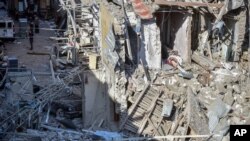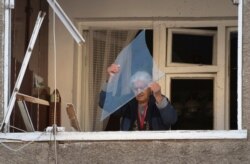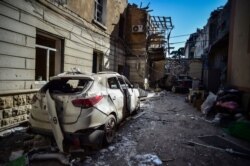Armenia and Azerbaijan continue to report fighting Monday despite a cease-fire brokered in the disputed breakaway region of Nagorno-Karabakh, which each country claims.
Armenia said Monday that Azerbaijani forces were shelling the southern front of the conflict zone, while Nagorno-Karabakh officials accused Azerbaijan of carrying out “large-scale hostilities” in the area of Hadrut. Nagorno-Karabakh is a predominantly ethnic Armenian enclave within Azerbaijan.
Azerbaijan’s Defense Ministry dismissed the accusations as “disinformation” and accused Armenian forces of shelling areas in Azerbaijan near the Nagorno-Karabakh region.
Both sides said Monday they have not violated the cease-fire and reiterated their commitment to it.
The cease-fire went into effect Saturday at noon local time (0800 UTC), at least temporarily halting deadly hostilities over the region.
Armenia and Azerbaijan agreed to the cease-fire after 10 hours of talks in Moscow. The truce is intended to allow both sides to exchange prisoners and recover the dead.
Russian Foreign Minister Sergei Lavrov, who mediated the talks, said the cease-fire should pave the way for further talks on the settlement of the conflict.
The United Nations human rights office said that it had received unconfirmed reports that more than 50 civilians, including children, have been killed since the fighting erupted Sept. 27.
The fighting also claimed the lives of about 400 soldiers and forced thousands of people to flee their homes.
Nagorno-Karabakh declared its independence from Azerbaijan in 1991 during the collapse of the Soviet Union, sparking a war that claimed the lives of as many as 30,000 people before a 1994 cease-fire. That independence is not internationally recognized.











